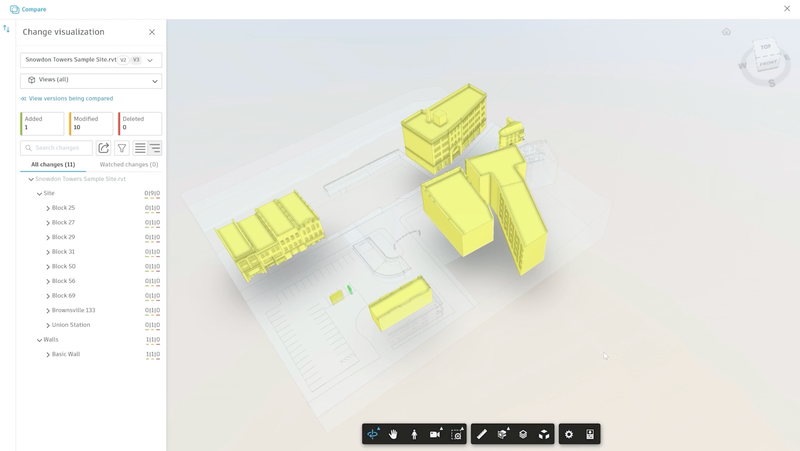Late last month, Autodesk announced the newest capability to their Autodesk Construction Cloud suite of products with Autodesk Bridge for Design Collaboration. The new offering builds off of Bridge, which was announced in March of 2022. Bridge for Design Collaboration is available with subscriptions to BIM Collaborate and BIM Collaborate Pro, and works to give AEC firms a way to share and consume design content among stakeholders in a controlled manner. Kyle Seyler, a Senior Product Marketing Manager with Autodesk, spoke to Geo Week News about the new release, the thinking behind it, and who benefits from the offering.
It’s worth starting with a brief explanation of the base Bridge platform, on which the Bridge for Design Collaboration is built. Like the new offering, the original Bridge platform is based around the idea of productive collaboration, which is always a big boost to a project’s ability to finish on time and within budget. With Bridge, stakeholders now had a way to complete that collaboration without as much need for manual data transfer and management while remaining sure that everyone is working with the same, up-to-date information.
As Seyler tells Geo Week News, “Data federation has been part of the plan [for Autodesk] since day one. Our whole advantage, I think, is data, and that data flows through the entire lifecycle. Bridge allows individual firms to retain and use their data so that it’s not lost or separated from them when the project ends.”
Bridge for Design Collaboration adds another layer on top of that for design packages. Seyler says, “After we launched Bridge, we were working on Bridge for Design Collaboration because we recognize that the design phase is where that data originals, and so we wanted to make sure those folks in the design phase feel comfortable in the way that they share and consume design information.”

With Bridge for Design Collaboration, teams are able to take their work within their own project setups and share whatever information is relevant with other stakeholders, automatically syncing packages to everyone’s project timeline. That way, teams can have updated information on who has delivered the latest designs, and who has not. Teams can also visualize change between versions, and assess which stakeholders are impacted by these changes. Crucially, a variety of file types are able to be shared as well, including a recent release of scan-to-mesh technology allowing data from laser scans or photogrammetry into the design review. Asked to summarize the broad value add from utilizing the new offering, Seyler pointed to three main benefits: Boosting trust, improving efficiency and quality, and gaining productivity over time with the usage of data.
Seyler also talked a bit with Geo Week News about why now was the time to launch this offering, and which specific stakeholders benefit from this kind of collaboration tool within a project. He notes, first of all, that the general direction of the AEC industry made this time the right one for this kind of development, noting that more projects are moving towards design-build workflows. He says, “Even if folks are still using traditional methods, they act as if they’re doing design-build sometimes,” making a design-focused collaboration tool more applicable across the industry.
He also calls out architects, and especially speciality contracts – or subcontractors – as the primary beneficiaries. For architects, the main benefit is being able to complete projects more quickly and reducing the need to come back later in the project. As for speciality contractors, Seyler and the Autodesk team recognizes that much of the time, they do their work within the same hub as the general contractor, the architect, and/or the owner, which can prevent them from making the same productivity gains as they could if they were working within their own hub. This allows them to do that without having to worry about what happens to the data after sharing it and ensuring that they will retain that data.
Anyone who has worked on a construction project knows that trust can be what allows a project to flourish or, more often, the lack of it can create significant problems. Much of that trust revolves around the sharing of data, which Bridge was designed specifically to address. Bridge for Design Collaboration takes that same idea and applies it to the crucial design phase of projects. Seyler tells us, “We’re not solving the problem of trust, but we’re making it so that its effects are mitigated.”
In a blog post announcing the new offering, Seyler sums up Bridge for Design Collaboration by saying, “Navigating today, and tomorrow’s, construction landscape requires construction pros to work more closely with other teams, improve data management, and leverage the right construction tech. Bridge for Design Collaboration covers all these aspects by fostering trust and collaboration while ensuring data retained for future productivity gains.”






